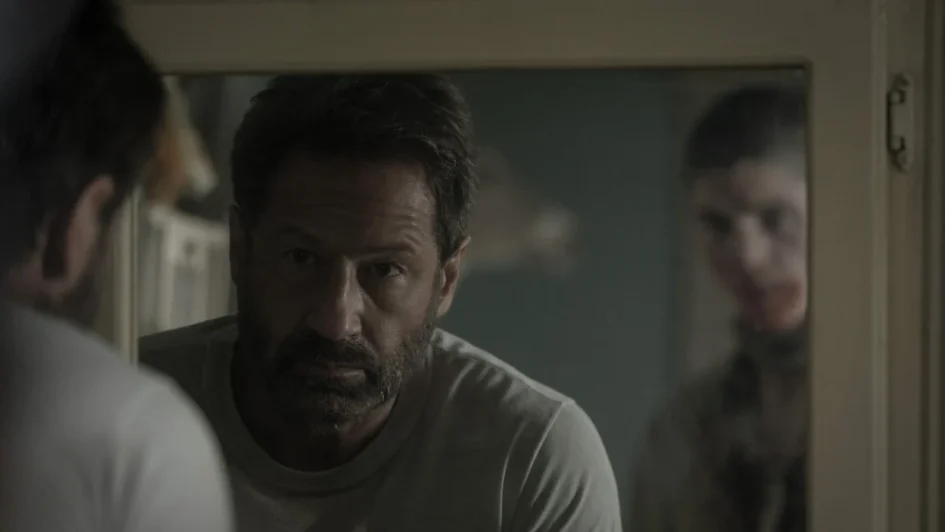Pet Sematary, the iconic Stephen King novel that inspired both a 1989 film adaptation and a 2019 remake, explores the depths of human grief and the consequences of meddling with the boundary between life and death. While King’s novel remains a masterpiece, the cinematic adaptations have garnered mixed reviews and are often viewed as falling short of the source material’s potential. Even the author, himself, expressed reservations about the original film, primarily due to what he perceived as subpar performances by the lead actors. Nonetheless, both the original film and its 2019 iteration have managed to carve a niche into the hearts of many horror enthusiasts, offering moments of suspense and terror in a nightmarish realm where the deceased seldom rest in peace.
For those who haven’t had the chance to view the remake, it’s a significant departure from the original movie. In the first film, one of the most iconic moments is the heart-wrenching demise of the young boy, Gage. The scene is etched into the memories of viewers, given the palpable anticipation leading up to it. Hints drop like breadcrumbs, with discussions about the treacherous road and Gage inexorably drawing nearer to his fate. The camera pans to a distracted truck driver as the vehicle hurtles down the road. The audience, with a heavy heart, knows what’s about to happen, yet helplessly watches it unfold.
In the remake, a radical shift occurs, sparing the toddler’s life and instead sacrificing his older sister, Ellie. The sequence plays out in a strikingly similar manner until, in a last-second twist, the father manages to rescue Gage from his impending doom, only for the trailer to dislodge and strike Ellie, snuffing her life out in an instant. This narrative pivot takes viewers on an emotional rollercoaster. First, there’s a semblance of familiarity, only to be followed by a sigh of relief as Gage survives this reimagined world. But then, just as swiftly, that relief turns into anguish as they witness the endearing little girl become the new target of death. This alteration may seem subtle, but its impact is nothing short of seismic.
It’s moments like these that imbue remakes and sequels with significance for audiences. I’m not suggesting that every film requires a major plot twist to leave a lasting impression, but there must be something that distinguishes this work from the rest. If movies merely replicate their predecessors, what purpose do they serve?
Directors who dare to make alterations, whether they ultimately prove successful or not, leave an indelible mark. Of course, the goal should be to introduce meaningful improvements while not alienating the core fanbase, but as the old saying goes, “You have to crack eggs to make an omelet,” and the film industry is no exception. If the remake had merely replicated the 1989 film, it would have lacked a unique identity. However, that one subtle change made it memorable and set it apart, exemplifying the hallmark of a well-crafted remake. The same can be said for prequels, as they need to add something to the story as well, more than just giving us a history lesson on characters we already know.
Now, in 2023, director Lindsey Anderson Beer takes us on a journey back in time to offer a prequel to the 2019 film with Pet Sematary: Bloodlines. Set in the year 1969, the story revolves around a young Jud Crandall, (Jackson White), who harbors a fervent desire to escape his hometown of Ludlow with his girlfriend, Norma, (Natalie Alyn Lind). However, before they can embark on their new lives, a series of eerie events unfolds, commencing with the unexpected return of Timmy Baterman (Jack Mulhern) from the war.
As Timmy exhibits unsettling behavior and his father, Bill (David Duchovny), fiercely guards his son from scrutiny, the responsibility falls onto Jud, Norma, and their friends Manny (Forrest Goodluck) and Donna (Isabella Star LaBlanc) to unravel the mystery and confront the looming threat before it’s too late.
As a prequel, Bloodlines fails to introduce any fresh elements to the franchise, leaving the narrative feeling somewhat redundant. We witness a younger Jud’s attempt to escape the town, meet his parents (including an unmistakable Stephen King doppelganger in the form of Henry Thomas, portraying Jud’s dad), and learn that various townsfolk, such as Dan, Bill and Majorie (Pam Grier), are already aware of the cursed terrain behind the pet cemetery, having confronted it previously. Regrettably, this film lacks the injection of any new information, rendering it somewhat unremarkable.
One might hope for an emotional high point or multifaceted characters, some of whom are endearing, but regrettably, none of the characters achieved that depth. In fact, I found myself revisiting the movie just to recall certain plot points and certain characters, as nothing managed to leave a lasting impression. Despite the presence of the star power of Pam Grier and David Duchovny (both of whom are underutilized), Pet Sematary: Bloodlines falls notably short of being a quality cinematic experience.
I rate Pet Sematary: Bloodlines with one out of five stars. The film regrettably lacks any potential for sparking interest in the narrative. Viewers won’t gain any new insights into Ludlow’s history or the pet cemetery, itself. The film’s climactic moments are, at best, uninspiring, and the acting performances leave little impact. Given the choice between this and almost any other film, Pet Sematary: Bloodlines is a clear pass.

